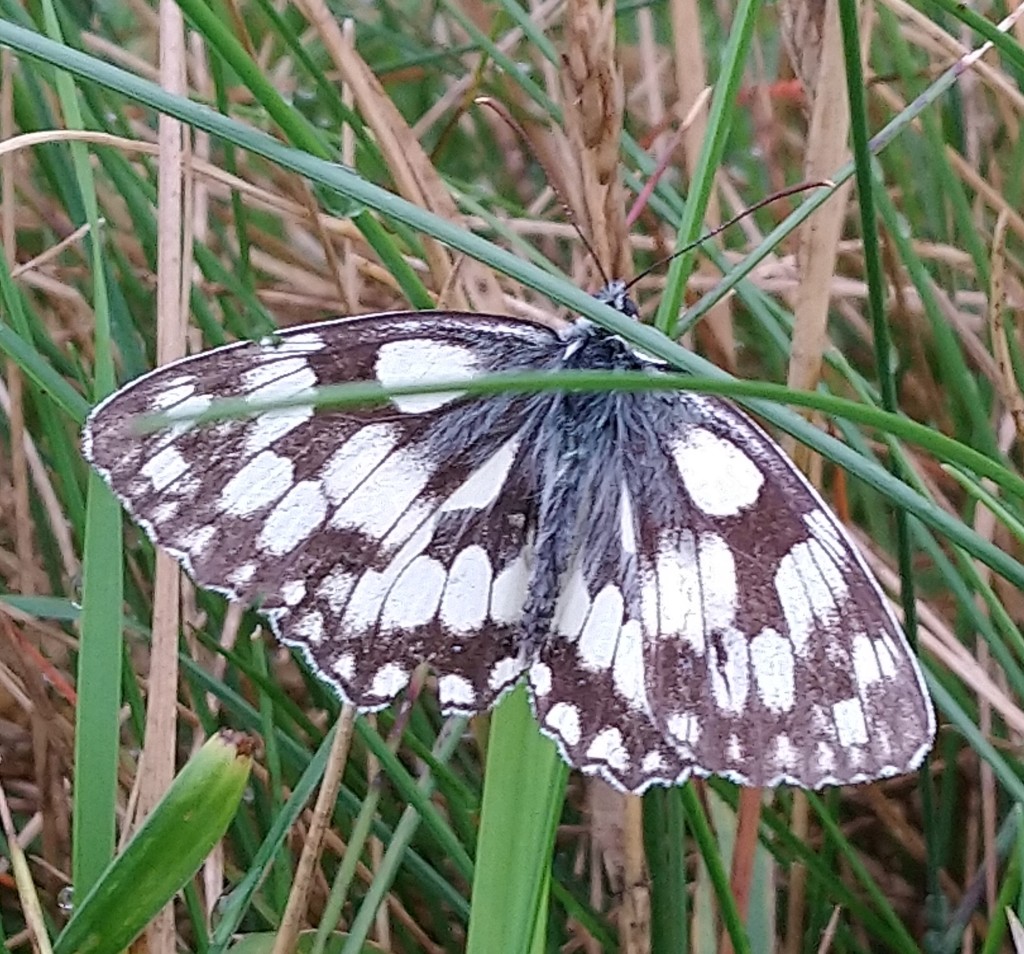
[226] Melanargia galathea, Marbled White
Introduction
Melanargia galathea, the Marbled White Butterfly, usually just called a Marbled White, may look superficially white in flight but it is actually a patchwork of black and white (or brown and white).
It shares its common name with Hesperocharis graphites from Central America and Nyctemera coleta and Nyctemera adversata from southeast Asia. Hesperocharis graphites doesn’t look like our version and the last two are both moths with light brown patterns a bit similar to Melanargia galathea.
The other twenty species of Melanargia, each with smaller local geographical distribution, are also called Marbled White.
Taxonomy
Kingdom – Animals
Phylum – Arthropods
Class – Insects
Order – Lepidoptera
Family – Nymphalidae
Subfamily – Satyrinae (Browns)
Tribe – Satyrini (Graylings and Ringlets)
Subtribe – Melanargiina (Only Malanargia)
Genus – Melanargia
Subgenus – Melanargia
Scientific Name – Melanargia galathea
Name
Although it may be predominantly brown this butterfly looks almost white when in flight.
I’m having to guess for the scientific name but melano- is an Ancient Greek root meaning black; Argus or Argia are Greek names in mythology associated with the town of Argos; and Galatea was a mythological figure named as milky-white. (Remember [154] Snowdrop.)
Description
The wings have a roughly chequered pattern on the wings. On the upper surface this is almost bleck and white, while the lower surface may have black or dark brown markings. Males and females are similar in appearance but generally males are black and females brown.




Caterpillars feed on various grasses. You will remember from [176] Yorkshire Fog that we have many species of grass. Wikipedia notes that the genera used by Melanargia galathea for its food include Phleum, Poa, [146] Festuca, Bromus, Dactylis, Brachypodium, Agrostis, Elytrigia, Holcus, [345] Triticum and Agropyron.
Habitat
The Marbled White is found across Europe apart from Scandinavia and the Iberian Peninsula, and Asia Minor.
In the UK it is more or less restricted to the south of England, generally in unimproved grassland areas.
See also
We have more butterflies to come. The Browns are the nearest relatives but visually this is more similar to [267] the Large White and Small White.
